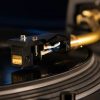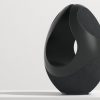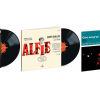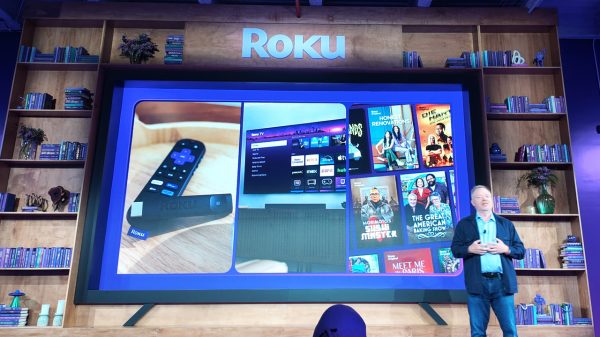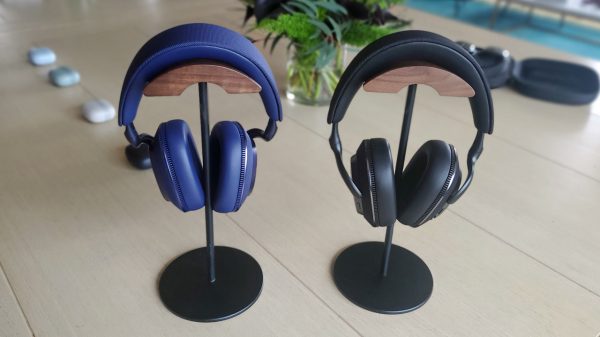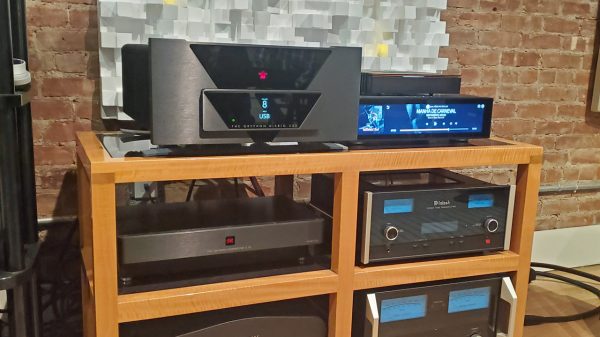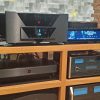Isolation is one of the harshest things that a human being can experience; either by choice to remove oneself from the daily grind to recharge our batteries or through force which can include incarceration or hospitalization. Having experienced both forms, there is no question that it gives one an opportunity to think; about our personal behavior and life’s choices and what truly matters.
People. Honesty. Decency and not thinking that stuff really matters — especially in the context of the horrendous fires ravaging the Los Angeles area which have caused so much devastation and loss of human life.

You can always replace your shoes or phone, but losing a home is a tremendous blow because we put so much blood, sweat, and tears into owning one and making it a place to raise a family. People can never be replaced.
eCoustics is a Southern California-based company and all of us here know people who have been impacted over the past week. Fire doesn’t care if you are rich or poor — it just takes what it wants and all of those memories are lost forever for so many people. Truly a heartbreaking situation.
Tens of thousands of people experienced an apocalyptic nightmare in the second largest city in this country and those of us who can go to sleep tonight in our homes should be beyond grateful and think about how fragile all of this really is.
How can you help those who really need it?
Red Cross: The American Red Cross has hundreds of volunteers deploying to Los Angeles to assist with emergent needs of those displaced by the fire. Click here to donate.
Gear Fetishism and the Embrace of AI
Something that has troubled me greatly about the audiophile community over the past 27 years has been the “gear fetishism” that drives it — because there is no rational reason to replace what you bought 2 years ago with the “next new thing” just because some Hi-Fi reviewer told you it was the best thing they ever heard — please take all of those declarations (from myself and anyone else who portends to be a Hi-Fi reviewer or editor) with a Greenland-sized chunk of ice.

Hi-Fi gear is either emotionally fulfilling or it isn’t. And whilst it may seem impossible in 2025 that anything engineered by the hundreds of manufacturers with advanced R&D facilities and engineers could possibly suck — there are plenty of products that are not worth the money and definitely something I would personally tell you not to buy.
There are a handful of vintage audio components that many of us would be extremely happy with — and that’s with all of the access that we have to so many of the new products that are currently available.

Are the new products better? Most of them are but that doesn’t negate the value of some older products that have proven that they can compete on a level playing field rather well.
All of that may sound rather bizarre coming from the Editor in-Chief of a Hi-Fi and Home Theater magazine, because we couldn’t exist unless we told you about the hundreds of new products that are introduced every year — but it’s something that I have thought about a lot lately in my isolation; aside from all of the other stuff that landed me there in the first place.
Resist the urge to jump at everything new — and that includes the rather reckless leap off the cliff holding AI by the hand and thinking that nothing bad could go wrong trusting how we think and function to software and hundreds of billions of dollars worth of hardware.
Everyone reading this on their smartphone is allowed to smirk.
We’re told that AI will make certain job functions easier and that we will become more “efficient.”
To spend more time doing what? Listening to music? Reading? Watching movies?
AI already tells us what to watch and listen to — but one thing I know for certain — it can’t make art worth a damn that came from the human soul.
It will never be Mozart, Dylan, Coltrane, Hopkins, Fitzgerald or Cave.

There is no possibility that it will create cinema that could ever compare to Kurosawa, Wilder, Kubrick, Hitchcock, Ford, or Scorsese.

Kafka, Ellroy, Austen, Orwell, McCarthy, Tolkien, Tolstoy, Hemingway?
AI might have the technical capacity to spew out words that might resemble some of these authors — but it will never have the ability to convey the emotion and human experience behind it.
Not a fucking chance.
The ATCs of the Human Experience
The ATC SCM50ASL are somewhat unwieldy beasts, but when you get them setup correctly, their somewhat dated industrial design goes by the wayside. They may not offer sleek and clean looking lines that bend under far too many layers of automotive paint, but they certainly don’t sound like any of those aforementioned speakers either.

The standard veneers (Cherry, Walnut, Oak & Black Ash) are of extremely high quality and one can understand why some might be willing to pay more for the premium veneer options that include, Rosewood, European Crown Cut Walnut, Pippy Oak, Burr Magnolia, and Burr Poplar.
Those who want a more modern finish, ATC also offers a clear high glossed Veneer, Piano Black, Piano White.
The cabinets are 28.23 x 11.97 x 18.89″ (HxWxD) and 107 pounds apiece. And you feel every ounce of that removing them from the layers of packaging.
The stands add 250mm to the height and are mandatory (and included).
Once you have these setup — moving them around is likely not going to be an easy option unless you love spending time with the chiropractor.
This level of performance does not come cheap. Not even remotely. I’ll certainly never be able to afford these wonderful loudspeakers, but those that can should certainly consider them.
Their ability to reproduce music and speech with accuracy, transparency and dynamics lies mainly in the SM75-150S soft dome midrange driver. However, recent modifications that include the new ATC SH25-76S tweeter and enhanced port profile have brought about further improvements to all performance parameters.
Each drive unit in the active model has its own dedicated and individually matched MOS-FET amplifier, while the 234mm/9″ bass driver incorporates ATC’s unique Super Linear Magnet technology.

Specifications
- Drivers: HF 25mm Mid 75mm LF 234mm Super Linear
- Amplitude Linearity ±2dB: 70Hz – 20kHz
- Frequency Response -6dB: 38Hz & 25kHz
- Matched Response: ±0.5dB
- Dispersion: ±80° Coherent Horizontal ±10° Coherent Vertical
- Max continuous SPL @1m: 112dB SPL
- Crossover Frequency: 380Hz & 3.5kHz
- Input Connector: XLR
- Input Sensitivity:1V
- Input Impedance: >10k ohms balanced XLR
- Amplifier Output: HF 50 Watts RMS MF 100 Watts RMS LF 200 Watts RMS
- Overload Protection: Active FET momentary gain reduction (amplifiers)
- Power Requirements: Voltage: 100, 115, 230 (factory set)
- Frequency: 50/60Hz
- Power: Nominal 90 Watts, Driven 350 Watts
The Class A/B amplification takes that part of the equation out of your hand and whilst one can certainly opt for the passive version of these loudspeakers — you’re likely to possibly spend even more to drive them properly and you may not hear them at their best.

The XLR input connection is also part of the package so make sure that your pre-amplifier, integrated amplifier (that can be used as a pre-amplifier) or DAC/network player also offers that capability.
The loudspeakers are also front-ported but that doesn’t mean you can slide them up against the wall (unless you must) and not pay a price for that sonically.
24″ to 36″ at a minimum from the wall behind them and not too close to the corners because their bass impact when pushed will not be kind to your room or the overall resolution and impact.
Illumination
AI will never be able to replicate those quiet and real moments in-between notes that separate average sounding loudspeakers from the best-of-the-best — and these are certainly in that category.
Until you’ve really experienced it, and that’s hard with so many loudspeakers that focus far too much these days on hyper detail and pushing everything into your lap at the expense of texture, tonal weight, and connecting the dots between you and the music.
The ATC SCM50ASL do focus on accuracy and that’s understandable when you think about how many professional studios use them for recording and post-production work.
If you’re looking for large floor standing loudspeakers that will make poor recordings sound great — these are definitely not for you.
Clarity is off the charts great, but it does lose some of that magic at much lower listening levels.
Please don’t acquire these for background music because that’s throwing your money away.
If you care about accuracy, inner detail, texture, and the dynamics of music — these offer a very different perspective that few speakers in their weight class can touch.
The bass range is dynamic, impactful and very quick; subwoofers need not apply in this scenario.
Those moments when a symphony slowly begins to transition from two or three string instruments to a massive crescendo of organized chaos — the ATC SCM50ASL come into their own and create a wall of sound that is both expansive and pinpoint in its imaging.
Listening to Shostakovich’s Symphony No. 13, “Babi Yar,” has always been an emotional rollercoaster because of the family connection to the events of 1941; Nazis and their Ukrainian sympathizers murdered nearly 34,000 Jews in two days at Babi Yar, a ravine near Kiev.
The darkness and somber mood of the piece brilliantly conveys the brutality of the event and the SCM50ASL are one of the few loudspeakers that I’ve experienced over the past 3 decades that could do this musical composition justice.
The victims of Babi Yar, were of course, denied any form of justice and the Soviets did their best to suppress any acknowledgement of one of the worst atrocities of World War II.
The illumination of truth; and that includes male and female vocals as well that stand firmly in place before you and one is awarded the opportunity to listen to each performer bring some form of life to each verse.
Imagine a pair of electrostatic loudspeakers with greater texture, depth, and dynamic impact and you get the idea.

The System
The ATC SCM50ASL require a rather significant investment on their own, so trying to keep the system below $40,000 was the initial goal <internal screaming>.
Where you need to spend slightly more is on the pre-amplifier which will have a rather significant impact on the overall tonal balance and performance of the system.
You also don’t require any loudspeaker cables with this system so there is some level of savings there. Snickering is permitted.
So where would I start?
The $25,000 loudspeakers will show off every weak link in the chain so my advice would be to focus on the analog playback first.

My personal preference would be the Vinyl Nirvana Thorens TD-125 MKII Turntable restoration with the new Hana SL MK II MC ($850 USD); the latest iteration of the award-winning cartridge is even better at digging out detail, cleaner sounding, and extremely resolving.
Luxman recently discontinued its superb EQ-500 phono pre-amplifier, but what still exists is the sleeper E-250 ($2,395) model that even includes its own MC step-up transformer for use with low output MCs like the Hana.
Another excellent and less expensive option would be EAT E-Glo Petit MM/MC Phono Pre-amplifier.
This $1,699 MM/MC phono stage which is manufactured by EAT (which is under the Pro-Ject umbrella) flies under the radar because of its branding and more limited distribution, but make no mistake — this is one of the best below $2,500 USD on the market and its flexibility and loading options are second to none.

Does it make sense to spend the additional $700 on the E-Glo Petit compared to the excellent Pro-Ject Tube Box DS2 which retails for $999 USD and offers similar gain settings and loading options?
I’ve owned the Pro-Ject for over 3 years and recommend it highly.
The biggest differences between the two would be the clarity, detail, resolution, and timbral accuracy of the more expensive unit.
If CD playback matters to you, there are a number of excellent options on our “Best CD players: Editors’ Choice 2024” list; the one that stands out in terms of its compatibility with the sound quality of the ATC speakers would be the Luxman D-03X ($4,195). It also features balanced outputs and tank-like construction.
The preamplifier/DAC/Network Player aspect becomes slightly more complicated because we already have a good DAC inside the Luxman CD player, but require a pre-amplifier with balanced outputs.
HoloAudio Spring3 Kitsuné Tuned Edition DAC ($3,098)(read our review)
A boutique online manufacturer, HoloAudio, is distributed by KitsuneHiFi, and even with the long wait time for delivery, this is one DAC worth waiting for. The Spring3 still starts below $2,200 and gives music listeners a real taste of what reference quality digital audio can sound like.
With support for native DSD, and high-resolution PCM digital audio, the Spring3 KTE USB DAC sounds more like a high-end analog source with layers of detail, a warm tonal balance, low noise floor, and superb top-to-bottom coherency.
The Spring3 KTE also offers balanced outputs and almost every digital input imaginable. The kicker is that HoloAudio now offers a pre-amplifier module for the DAC that only runs an additional $600.
$3,698 USD isn’t borscht but when one considers the level of digital playback quality from this DAC/pre-amplifier combined with something inexpensive like the WiiM Ultra or HoloAudio HoloAudio RedDDC & Network Streamer…it makes more sense.
Not that spending $38,000 on a Hi-Fi system makes a lot of sense anymore, but loudspeakers like the ATC SCM50ASL will never show off their potential unless used in a system with this level of components.
An aspirational system for those with the space and intense desire to truly feel their music.

Pricing & Availability
The ATC SCM50ASL active loudspeakers are available now at ATC authorized dealers. Stands are included in the following prices, but a high gloss option with multiple layers of manually applied lacquer adds $4,000 to any finish.
- $22,499/pair – Standard Finishes (Cherry, Black Ash, Walnut, Oak, Black Satin, White Satin)
- $24,499/pair – Premium Finishes (Rosewood, Burr Magnolia, Pippy Oak, Grey Bolivar)
- $25,499/pair – Piano Finishes (Piano Black or White)
For more information: lonemountainaudio.com
Related Articles:

